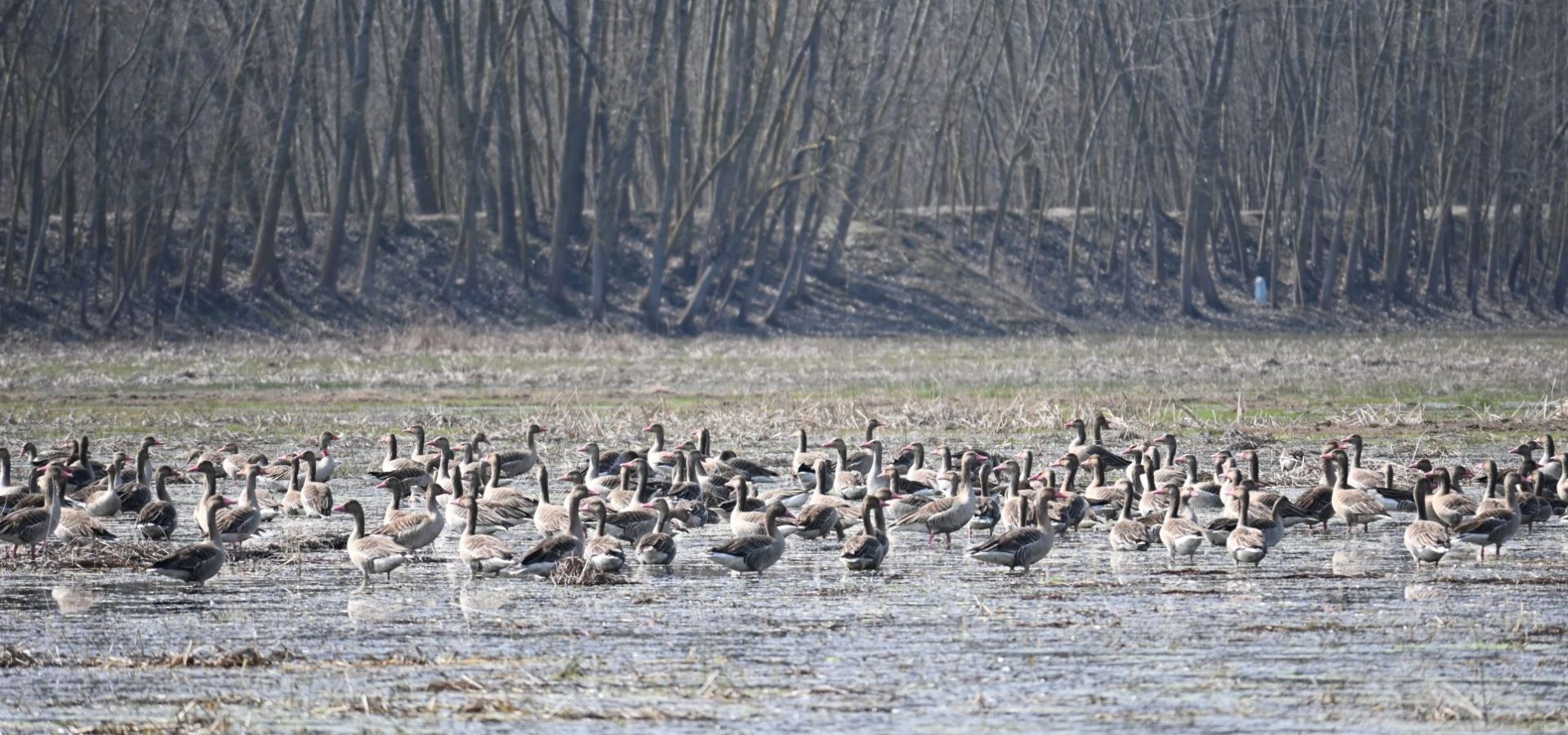The Jammu and Kashmir team of Wildlife SOS eagerly participated in the Asian Waterbird Census for 2023. The team accompanied the Wetlands Division of the Wildlife Protection Department, Jammu and Kashmir for the census. The census was preceded by an orientation for the participants that was organised at the Hokersar wetland. On the subsequent day, field activities were carried out at different wetlands.
Last year, the Wildlife SOS team conducted the census at the Hokersar wetland, which is known to be the largest bird reserve in the Kashmir Valley and is located at the basin of the Jhelum river. This year, the team along with the officials of the Wildlife Protection Department carried out the census at the Shallabugh wetland. A team of eight members conducted the census, wherein two people were assigned to four different points within the area.
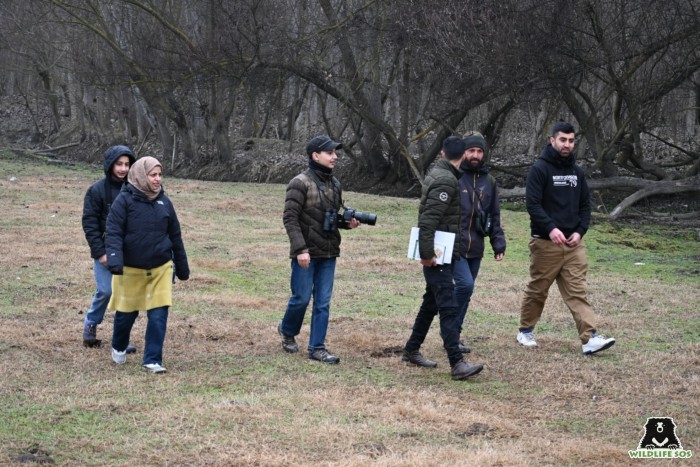
Students from Central University, Kashmir University and volunteers from local NGOs also participated in the Asian Waterbird Census (AWC) at wetlands across Jammu and Kashmir. The census took place under the supervision of the International Waterbird Census, a global monitoring programme that supports the conservation and management of wetlands and waterbirds worldwide.
There are five wetlands of international importance in Jammu and Kashmir, identified under the Ramsar convention. These include Shallabugh, Haigam, Surinsar-Mansar, Hokersar and Wular lake. The sixth one, Tsomoriri, is in Ladakh. Out of the five wetlands, Shallabugh and Haigam were inducted recently (in 2022) as Ramsar sites. A Ramsar site is a wetland designated to be of international importance under an international treaty established by UNESCO. Known as the Ramsar Convention or the Convention on Wetlands, the treaty was established to facilitate national action and international cooperation regarding wetland conservation.
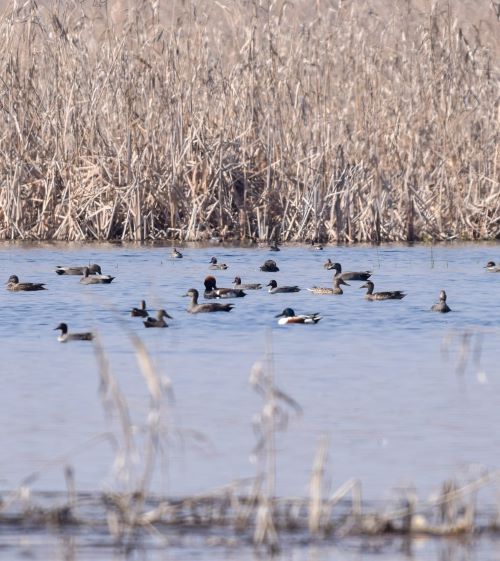
The Shallabugh wetland falls within the Ganderbal district and covers an area of 16 square kilometres. The Shallabugh Wetland Conservation Reserve lies west of Anchar Lake, in the deltaic region of the Sindh river. This shallow wetland is primarily fed by water from the Sindh river, along with snowmelt water. The depth of the water in Shallabugh ranges from 0.3 to 2 m, and the water level varies considerably based on rainfall.
This creates a perfect semi-aquatic ecosystem, and Shallabugh’s reed beds and floating aquatic vegetation act as the ideal habitat for 21 important resident and migratory bird species. Many endangered species such as the Steppe eagle, Pallas’ fish eagle and Black-bellied tern, and vulnerable ones like the Eastern imperial eagle, Yellow-eyed pigeon and Wood snipe are spotted here.
The migratory birds observed at this year’s census include Mallards, Gadwalls, Shovelers, Common teal, Red-crested pochard, Common pochard and Northern pintails. But the dominating sightings made this year were the huge flocks of Greylag geese!
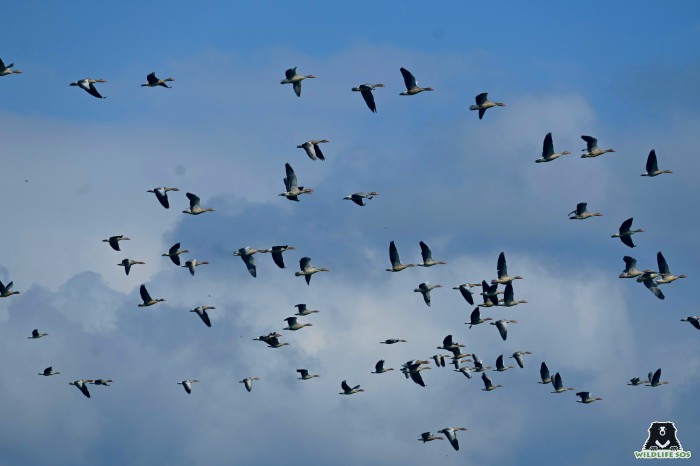
It has been 52 years since the adoption of the Ramsar Convention. The convention was agreed upon in the Iranian city of Ramsar on February 2, 1971. Since then, this date is observed every year as World Wetlands Day to spread knowledge and awareness about the significance of wetlands, and their invaluable ecosystem services.
This year’s theme for World Wetlands Day was decided as “Revive and restore degraded wetlands”, in line with the United Nations Decade on Ecosystem Restoration (2021-2030). Wetlands are being compromised for infrastructure development and are declining at a rapid pace. According to the Global Wetland Outlook, we are losing these habitats three times faster than forests.
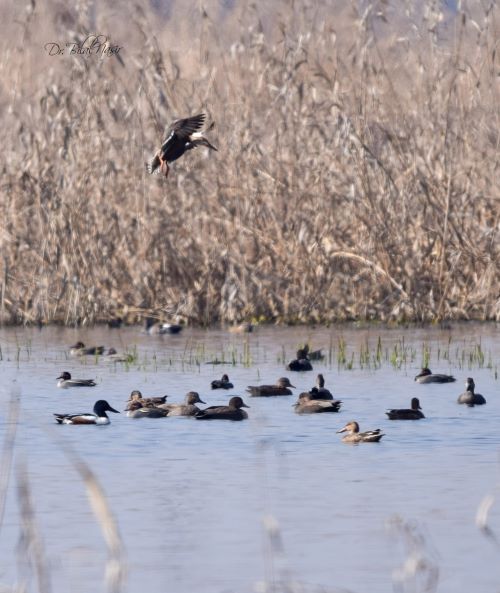
The Asian Waterbird Census is one of the most efficient methods to monitor the health of wetlands and their biodiversity. And what better way to protect these ecosystems than to assess the population of its most renowned visitors: migratory birds! As a reader, you can play your part by spreading the word in your own circle. You can also support us in our efforts to conserve these natural resources by becoming a monthly donor to Wildlife SOS.

